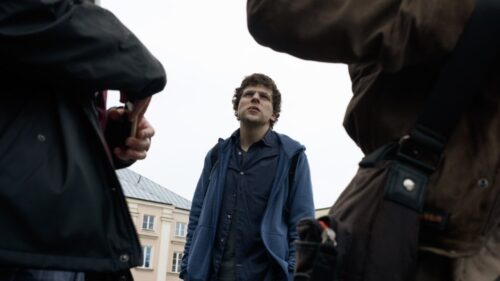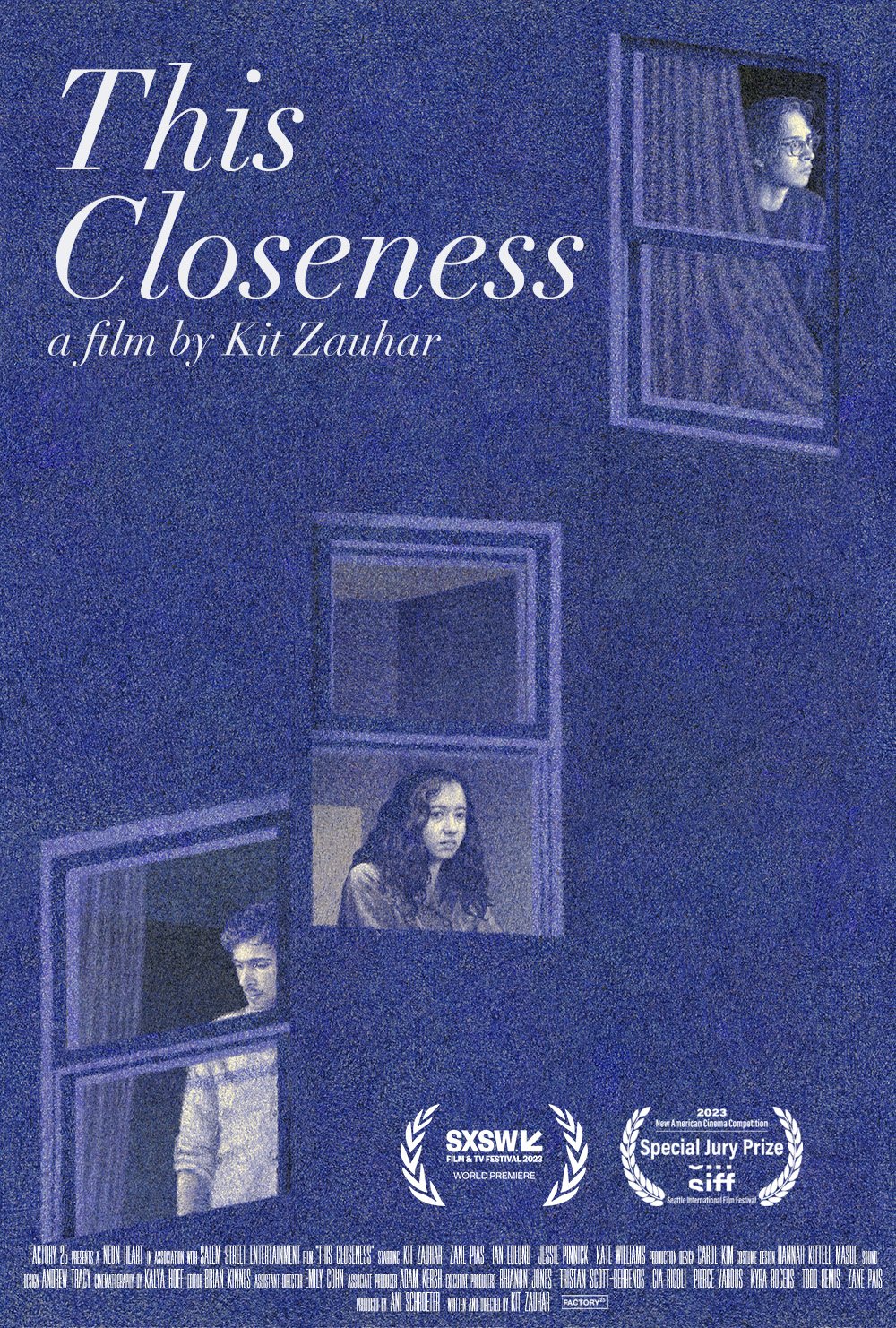Since its premiere at the Berlin International Film Festival, İlker Çatak's "The Teachers' Lounge" has been growing a fan base of viewers stunned at how this smart film turns a social drama into a thriller. It won the Audience Award there and was later named one of the five best international films of the year by the National Board of Review and nominated for Best Foreign Language Film by the Chicago Film Critics Association. Germany has selected it as their submission for the Academy Awards.
"The Teachers' Lounge" centers a young teacher named Carla Nowak (a phenomenal Leonie Benesch) who is first startled at how a student is being treated by the staff, and then thrown into a controversy when she accuses a fellow teacher of theft. Shot in tight 4:3 framing and never leaving the German school at which it's set, "The Teachers' Lounge" starts like a mystery, but becomes richer as Çatak unpacks what these kind of highly-stressful environments do to the people stuck in them. When the film played the Chicago International Film Festival, Çatak checked in with RogerEbert.com to discuss the script's origin from his own life, the decision to shoot in such tight framing, and even what the film takes from "Uncut Gems" and "There Will Be Blood." It opens in limited release this week before going wider in January.
In the conversations around this film at festivals, what's a response that surprised you? A question or interpretation that shocked you a little bit or made you think about it differently?
The audiences in the States are much more physically involved. I think it's got to do with some expectation of gun violence. That's something that I didn't encounter in screenings that we had in Europe. Here, when the kid grabs his backpack, audiences gasp. There's a visceral reaction that's much stronger. Other than that, I was a little nervous about how the film would resonate with people over here because there's so much subtitles that you need to read. But it turns out to be no problem for people. An American audience is so well-educated when it comes to films and movies that it's such fun to show this film.
There aren't direct, obvious heroes and villains in this piece. Can you talk a bit about the importance of gray areas and ambiguity?
Of course, my heart is with the teacher. That's the hero of the film and everybody else is like an antagonist. At the same time, when I write characters that are antagonizing, I always try to understand them, and I always try to make them right too. I think it's a little outdated to think of villains as "the evil people". You need to have that sort of ambiguity. Audiences are much more educated and you can't be flat and shallow when it comes to characterization because there is no such thing as a black and white world. I actually like films and stories when you can't tell who's right and who's wrong. Whenever I have a story like that in my mind, I know that is something worth telling.

Do you have an opinion here as to who's right and who's wrong? The film ends without the kind of moral judgment some might be looking for, but do you have a solid opinion on what happened and why it happened? Or is some left gray for yourself?
I think everybody's right in this story. Even the person who is accused of stealing. I talked a lot with the actor about it. She said, "I would love her to be innocent." I said, "OK, go for it." I do understand that some people want that answer, but it's not about whodunit but how do we deal with accusations and how do we deal with the weak? How does every society need a scapegoat? How a system sometimes needs sacrifices to keep itself running. You have that in politics when someone is under fire—you can't really say who's right or wrong and so somebody just gets fired. You have that a lot in the world. I think we need to actually think about how we deal with these moments. If there's no absolute proof then you shouldn't be judging.
It seems to me you're also interrogating how the scapegoat is also often the furthest down the ladder, the furthest from privilege.
Exactly.
How much is that social status important to this story? Social, racial, all the things that determine who ultimately ends up the scapegoat.
Absolutely. In the whole identity politics debate, people talked a lot about race and gender, but nobody talked about class. I thought this woman in my film – she's the first one to get to school, she's the last one to leave, she's a single mother, and she earns less than everyone else. She's still the one that is friendly to everybody all the time. I wanted that character to be – even if she gets accused and excluded from the school, I wanted her to not be a victim. That was one of the rules that we had in the writers' room. There are no victims in this story, and nobody ever backs down. That's how you create drama. There's nothing more boring than harmony. It's not just her. It's that our teacher is of Polish origin and doesn't want to speak her own language in the school. Or the fact that the first kid that gets singled out is a Turkish kid. That's all me growing up as a Brown person in Germany. On the one hand, you're trying to fit in and speak their language and kind of hide your heritage. On the other hand, you're the Brown person that gets racially profiled for no reason. How many times have I been stopped by police? So the film deals with a lot of these things. It's got a lot to do with me.

There's a lot of your education in this film?
I co-wrote this with Johannes Duncker, and we went to school together. Our school was actually a pretty good school in Istanbul. We went to the German school in Istanbul, and back in our time, there was a series of thefts. We all knew that two boys were actually stealing, but nobody wanted to snitch. One day, something happened and three teachers came in and frisked us. Back then, we didn't question it. They were the teachers. When we first gave this script to educators, they said that it happened quite often, but you cannot do that anymore without the police or you would have to say it was voluntary. So that opened up something interesting: You can say something is voluntary, but if you are in a hierarchy, and especially if you're a kid, you need some balls to say no. So that incident was kind of the kick-off for this story. We were thinking about truth and proof. How absurd the whole notion of truth has become in recent years with Trump and Fake News and Cancel Culture. There are a lot of observations of everyday life.
A lot of people have said it's a microcosm of political structures or society and I wondered how deliberate that was – it sounds like that was the intent all along. Would that be accurate?
Absolutely. We were very much aware of school being a miniature for society. Very intentional.
Why 4:3? Why the tight frame?
There was something about 4:3 that isolated the characters. Since this is about a woman who can't really connect with anybody at the school, we thought that it was important. It's also kind of like our own time in school, a reminiscence about it almost like a Polaroid. Ultimately, my DP Judith Kaufmann, who is like the best person ever, she's been around, she said, "I've never done this. Let's try it." When you're working in a new format, you're looking differently. If we had shot this in scope, I could probably tell you ten reasons why too. (Laughs.)

I think this way keeps it tight on faces—making it more about the people within the setting than the setting itself. It keeps us really focused on the people.
Right. There's a Safdie brothers film called "Uncut Gems." In that, they used a lot of long scope and long lens. You want some air to breathe in. For the 4:3, it has the same lack of air. "Uncut Gems" was a film that I loved. I hated watching it because it was so stressful, but I saw the quality in it. I was telling my editor to watch that film.
What other films and filmmakers inspired this one?
There's a film by the Dardenne Brothers called "Young Ahmed" about a kid who goes to this mosque and wants to kill a teacher. We also had a look at "The Class." That was a film that does not leave school. It has the same miniature mindset. And then there's a film called "The Measure of a Man." Some French films. Some Belgian films. We had a look at "Elephant". That was also a decision for 4:3. A bunch of films. The ending, the last shot was very much inspired by "There Will Be Blood." If you remember how it ends, there's insane music. We had a list on Letterboxd on films we thought would be useful and revisited some of them. It was nice to be watching films with my old school friends and writing one.












